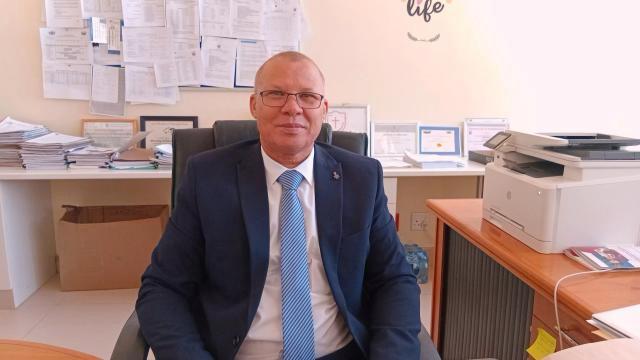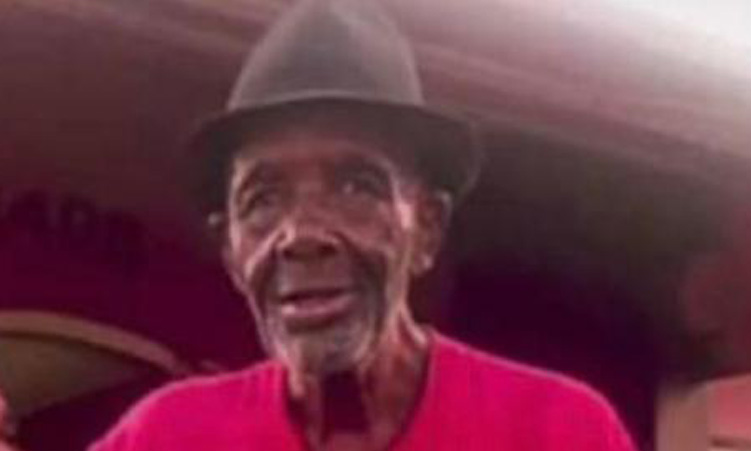THE most dangerous place for a woman or girl in Namibia to be is right in her own home.
And the most dangerous company a woman or girl in Namibia can keep is with someone that she knows, loves and probably trusts. These are some of the findings made in a comprehensive new report on rape in Namibia and the operation of the country’s Combating of Rape Act that was released in Windhoek this week.The report, produced by the Legal Assistance Centre’s Gender Research and Advocacy Project, is the result of research that has been done over the past two years to see how well the Combating of Rape Act is operating in practice to combat the problem of rape in Namibia.The research included the gathering of information from 409 Police dockets and from court records on 547 rape cases during 2005 and 2006, as well as interviews with Police officers, public prosecutors, Directorate of Legal Aid lawyers, magistrates, doctors and rape survivors.Among the findings made in the report, said Dianne Hubbard, the co-ordinator of the LAC’s Gender Research and Advocacy Project, is that at least seven out of every ten people who reported rapes in Namibia knew their attacker.”Most shockingly, about one fourth of the rapes in the sample involved partners, ex-partners or family members,” she said at the launch on Tuesday.”One out of every four rapes is perpetrated by a ‘loved one’.What a perversion of love!” she remarked.”Furthermore, the most dangerous place to be in terms of rape is not out on the streets or in a dark riverbed, but at home.More than half of all the rapes in our sample occurred inside someone’s home,” Hubbard added.Only about 12 per cent of all rapes were committed by complete strangers, it was found.In 21 per cent of the cases surveyed, the relationship between the perpetrator and the complainant could not be established.Many of the people who had been raped by someone they know later tried to withdraw the charges, it was found during the research.Their relationship with the perpetrator, and financial dependence on him, is often the reason for this request, Hubbard indicated: “One third of the complainants in rape cases ask to have their cases withdrawn.Most of these involve cases where the accused is a relative or an acquaintance.Some complainants said that the rapist was the family’s main breadwinner or the father of their children.Others had ‘forgiven’ the perpetrator or just wanted to move on with their lives.”Someone accused of rape in Namibia has a far better chance to go scot-free on that charge than to be convicted, the report also concludes.Four out of five people accused of rape never have to pay for their crime, Hubbard said.That means that only one out of every five people accused of rape or attempted rape in Namibia will be convicted of either of these crimes, she said.Namibia’s 16 per cent conviction rate for this type of crime however still looks good compared to South Africa’s seven per cent conviction rate or England’s six per cent conviction rate – but on the other hand does not compare favourably to a conviction rate like the 21 per cent found in Germany or 49 per cent found in Hungary, she added.Rape is a crime that respects neither extreme youth nor old age in Namibia, it was also found.At least a quarter of the perpetrators of cases included in the study were minors, with most of these being boys under the age of 18, Hubbard also pointed out.”The oldest perpetrator was 92, while the youngest was only age seven.Several prosecutors described cases involving rapes by boys as young as eight, nine and ten.There is clearly something wrong with the messages we are teaching our children about masculinity,” she said.Ninety-nine per cent of the people accused of rape in the cases that were examined in the study were male, she also said.Only three cases involving female perpetrators were found, and none of them was convicted, according to Hubbard.It was found further that more than a third of the people who had been raped were under the age of 18.The youngest person raped was only one year old; the oldest, 83, Hubbard said.One out of every 14 rape victims was a man or a boy.With almost 1 200 rapes and attempted rapes reported in Namibia in 2005 – this amounts to about 60 reported rapes for every 100 000 people in the country – Namibia’s “rape rate” would be the third highest out of 53 countries included in a recent United Nations survey on crime.South Africa tops that list with about 117 reported rape cases per 100 000 people, with Canada in second place with a rate of about 77 per 100 000, and the United States in fourth place, with a rate of about 32 per 100 000 people.Overall, it was concluded that the Combating of Rape Act seems to be operating well.”The challenge is simply to make it more effective in practice,” Hubbard said.These are some of the findings made in a comprehensive new report on rape in Namibia and the operation of the country’s Combating of Rape Act that was released in Windhoek this week.The report, produced by the Legal Assistance Centre’s Gender Research and Advocacy Project, is the result of research that has been done over the past two years to see how well the Combating of Rape Act is operating in practice to combat the problem of rape in Namibia.The research included the gathering of information from 409 Police dockets and from court records on 547 rape cases during 2005 and 2006, as well as interviews with Police officers, public prosecutors, Directorate of Legal Aid lawyers, magistrates, doctors and rape survivors.Among the findings made in the report, said Dianne Hubbard, the co-ordinator of the LAC’s Gender Research and Advocacy Project, is that at least seven out of every ten people who reported rapes in Namibia knew their attacker.”Most shockingly, about one fourth of the rapes in the sample involved partners, ex-partners or family members,” she said at the launch on Tuesday.”One out of every four rapes is perpetrated by a ‘loved one’.What a perversion of love!” she remarked.”Furthermore, the most dangerous place to be in terms of rape is not out on the streets or in a dark riverbed, but at home.More than half of all the rapes in our sample occurred inside someone’s home,” Hubbard added.Only about 12 per cent of all rapes were committed by complete strangers, it was found.In 21 per cent of the cases surveyed, the relationship between the perpetrator and the complainant could not be established.Many of the people who had been raped by someone they know later tried to withdraw the charges, it was found during the research.Their relationship with the perpetrator, and financial dependence on him, is often the reason for this request, Hubbard indicated: “One third of the complainants in rape cases ask to have their cases withdrawn.Most of these involve cases where the accused is a relative or an acquaintance.Some complainants said that the rapist was the family’s main breadwinner or the father of their children.Others had ‘forgiven’ the perpetrator or just wanted to move on with their lives.”Someone accused of rape in Namibia has a far better chance to go scot-free on that charge than to be convicted, the report also concludes.Four out of five people accused of rape never have to pay for their crime, Hubbard said.That means that only one out of every five people accused of rape or attempted rape in Namibia will be convicted of either of these crimes, she said.Namibia’s 16 per cent conviction rate for this type of crime however still looks good compared to South Africa’s seven per cent conviction rate or England’s six per cent conviction rate – but on the other hand does not compare favourably to a conviction rate like the 21 per cent found in Germany or 49 per cent found in Hungary, she added.Rape is a crime that respects neither extreme youth nor old age in Namibia, it was also found.At least a quarter of the perpetrators of cases included in the study were minors, with most of these being boys under the age of 18, Hubbard also pointed out.”The oldest perpetrator was 92, while the youngest was only age seven.Several prosecutors described cases involving rapes by boys as young as eight, nine and ten.There is clearly something wrong with the messages we are teaching our children about masculinity,” she said.Ninety-nine per cent of the people accused of rape in the cases that were examined in the study were male, she also said.Only three cases involving female perpetrators were found, and none of them was convicted, according to Hubbard.It was found further that more than a third of the people who had been raped were under the age of 18.The youngest person raped was only one year old; the oldest, 83, Hubbard said.One out of every 14 rape victims was a man or a boy.With almost 1 200 rapes and attempted rapes reported in Namibia in 2005 – this amounts to about 60 reported rapes for every 100 000 people in the country – Namibia’s “rape rate” would be the third highest out of 53 countries included in a recent United Nations survey on crime.South Africa tops that list with about 117 reported rape cases per 100 000 people, with Canada in second place with a rate of about 77 per 100 000, and the United States in fourth place, with a rate of about 32 per 100 000 people.Overall, it was concluded that the Combating of Rape Act seems to be operating well.”The challenge is simply to make it more effective in practice,” Hubbard said.
Stay informed with The Namibian – your source for credible journalism. Get in-depth reporting and opinions for
only N$85 a month. Invest in journalism, invest in democracy –
Subscribe Now!









